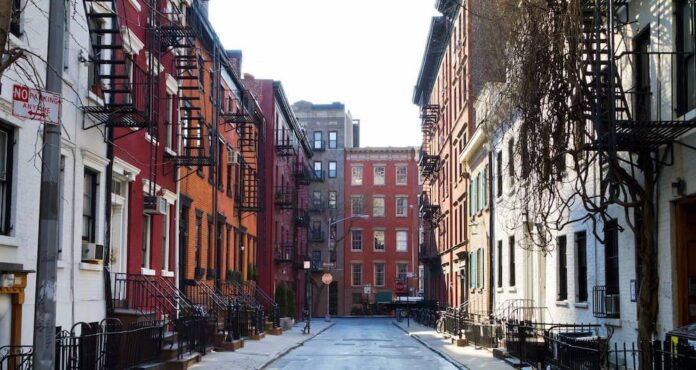If you’ve strolled through Greenwich Village, you’ve probably come across Gay Street and wondered how it got its name. The street is located west of 6th Ave, between Christopher St and Waverly Pl. Just a block away from the infamous Stonewall Inn, the birthplace of modern LGBTQ rights, one would think Gay Street is named after the riots. However, the history of the street has nothing to do with LGBTQ rights or figures.
Why is Gay Street Called Gay Street?
Although the origin of the name is still disputed, it is known that this street dates back to the late 1820s and early 1830s looking at the federal style of buildings. It goes back to a time when the term “gay,” didn’t have any relation to a person’s sexuality. Instead, the original meaning of gay was to be happy and carefree.
In the late 19th century, the word started to mean an unconventional lifestyle that was different from societal standards, and then as time went on, it meant freedom from sexual conventions. At this time, many of the people who lived in the Village belonged to unconventional communities, were usually unmarried, and had non-traditional jobs. To everyone, they were living the “gay life.” By the 20th century was when the connotations of the word started changing and eventually became the meaning we know today.
When was Gay Street Named?
It is assumed by historians that Gay Street was given its name in the 1820s. According to the New York Times, it appears officially in the city records for the first time in 1827. During the start of the 19th century, many African-Americans made their homes down this street. It is because of this association, that people like to assume it’s named after Sydney Howard Gay, the editor of The National Anti-Slavery Standard and a key figure in the Underground Railroad. Some historians believe some of the Underground stops were located on the block. However, there is a huge hole in this theory, as he was only 13 when the first published reference to the street name appeared. Instead, most authorities on this matter believe that the name belongs to a family that lived there, as many of the street names nearby are local family names.
The History of Gay Street
In the late 19th century, when Greenwich Village was the hub of New York City’s African-American community, many of the residents on Gay Street were POC and also musicians. Some notable Gay Street residents during that time were Ruth McKenney and her sister Eileen. Their experience living in the basement of house 13 resulted in a story that was published in a book, a play, and a movie, “My Sister Eileen.”
Gay Street Location
The street itself can’t be seen in its entirety from just one end, as it bends at the northern part. But the length of the street, located between Christopher St and Waverly Pl, gives it an intimate feel compared to most normal New York streets. There is a clear difference in the type of buildings on the street. Because of how narrow the street was, the city widened the street in 1833. This is why the houses on the west side of the street are in federal style (circa 1780-1830) and the houses on the east side, which were built later after the street widening, are in the Greek-revival style.
Despite the street’s connections to the LGBTQ community and Black history, the associations of the street name seem nothing more than just a coincidence. However, the history of the street itself is still deep and one to look into. Make sure to pop by for a visit the next time you are in Greenwich Village.


